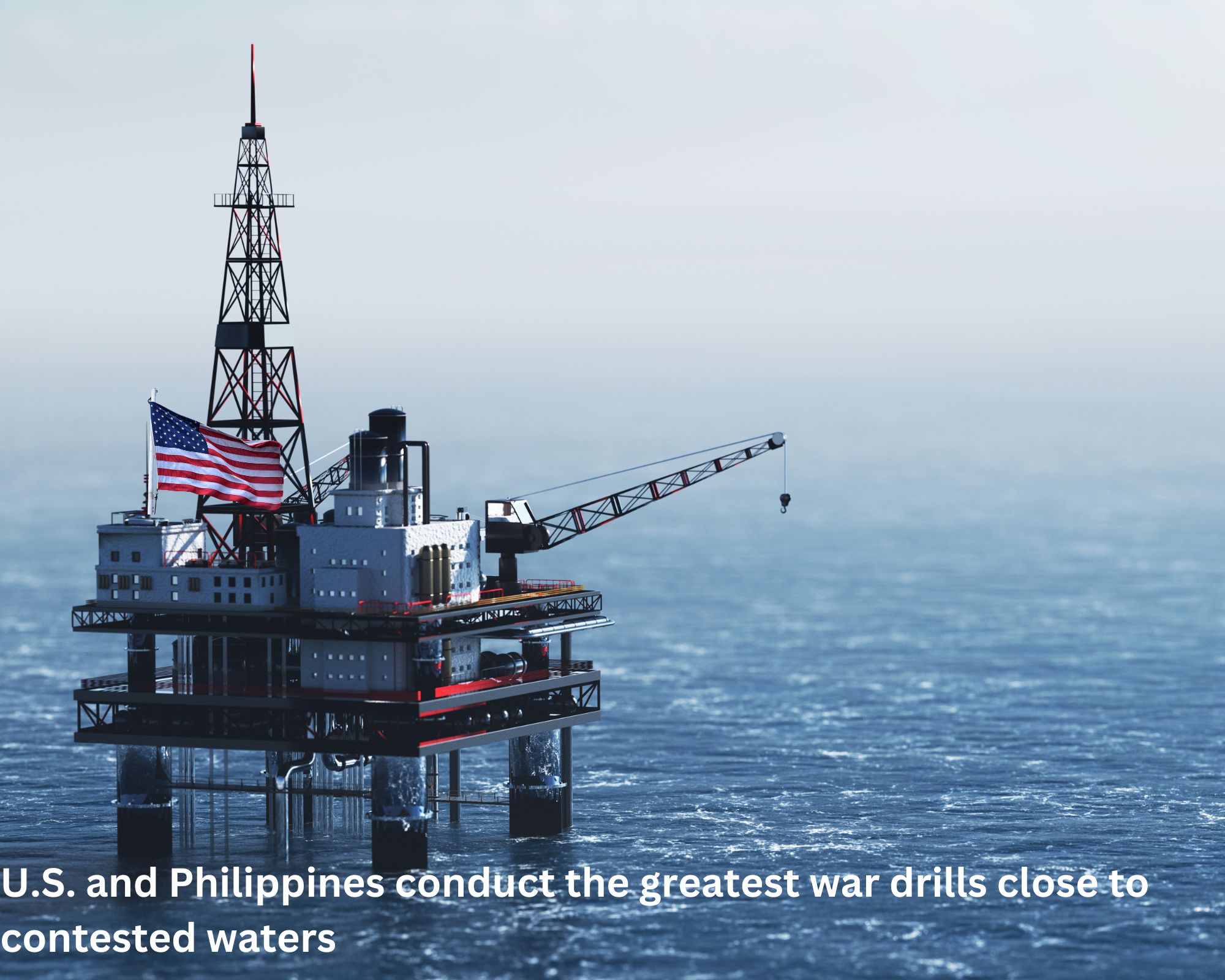Summary:
-
Around 12,200 US military personnel, 5,400 Filipino forces, and 111 Australian equivalents participated in the largest exercises in Balikatan’s three-decade history.
-
“Logico declared, “This is actually a form of deterrence.”
-
“The long-running territorial disputes between China, the Philippines, and four other states, as well as Beijing’s intention to conquer Taiwan, using force if necessary, have set Washington and Beijing on a collision course.
-
China sent a warning last week about the growing American military presence in the area.
-
Such “freedom of navigation” operations have been carried out by the U.S. military for years in an effort to counter China’s sweeping territorial claims in the congested seaway.
This is consistent with the Philippines’ efforts under President Ferdinand Marcos Jr. to protect its territorial interests in the South China Sea by stepping up joint war drills with the U.S. and allowing rotating groups of American forces to stay in more Philippine military bases in accordance with a 2014 defence agreement.
Historical war drill
Around 12,200 US military personnel, 5,400 Filipino forces, and 111 Australian equivalents participated in the largest exercises in Balikatan’s three-decade history. According to U.S. and Philippine military authorities, a display of American warships, fighter planes, Patriot missiles, HIMARS rocket launchers, and anti-tank Javelins will take place.
Col. Michael Logico, a Philippine spokesman for Balikatan, assured reporters prior to the start of the maneuvers that “we are not provoking anyone by merely exercising.”
Logico declared, “This is actually a form of deterrence.” “Deterrence is when we prevent outsiders from occupying us,”
According to Logico, American and Filipino forces will sink a 200-foot target vessel in Philippine territorial seas off the western province of Zambales this month in a synchronized airstrike and artillery bombardment during a live-fire war drills the allies will execute offshore for the first time.
Logico declared, “We will attack it with every weapon system we have, including ground, naval, and aerial.”
The Philippines’ military leaders claimed the maneuver was to strengthen the nation’s coastal defence and was not directed against any specific country, despite the fact that its location, facing the South China Sea and across the waters from the Taiwan Strait, would undoubtedly upset China.
According to the U.S. Embassy in Manila, such field exercises would “test the allies’ abilities in combined arms live-fire, information and intelligence sharing, communications between manoeuvre units, logistics operations, and amphibious operations.”
The long-running territorial disputes between China, the Philippines, and four other states, as well as Beijing’s intention to conquer Taiwan, using force if necessary, have set Washington and Beijing on a collision course.
Chinese reaction to the war drill
China sent a warning last week about the growing American military presence in the area. It “would only result in more tensions and less peace and stability in the region,” according to Mao Ning, a spokesman for the Chinese Foreign Ministry, during a routine news briefing in Beijing.
After Taiwanese President Tsai Ing-wen’s meeting with House Speaker Kevin McCarthy last week in California, which incensed Beijing, China finished three days of war drills simulating closing off Taiwan on the day the Balikatan exercises began in the Philippines.
The Chinese seized Mischief Reef in the middle of the 1990s and turned it into one of seven missile-protected island bases in the tensely disputed Spiritless archipelago in the South China Sea. On Monday, the U.S. 7th Fleet deployed the guided-missile destroyer USS Milieus within 12 nautical miles of the coral outcrop, which Manila claims. The U.S. military has carried out such “freedom of navigation” operations for years in an effort to counter China’s sweeping territorial claims in the congested seaway.
The 7th Fleet stated, “The United States will continue to defend the rights and freedoms of the sea guaranteed to all as long as some countries continue to claim and assert limits on rights that exceed their authority under international law.” No member of the global community should be threatened or forced into reneging on their rights and liberties.

